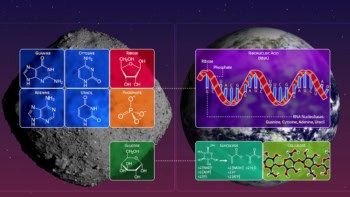Students at the University of Manchester in the UK have created a 30,500-piece LEGO model of the iconic Lovell Telescope to mark the 80th anniversary of the Jodrell Bank Observatory.
Jodrell Bank was established in 1945 in Cheshire in northwest England by the English radio astronomer Bernard Lovell, who became the observatory’s first director, a position he held until 1980.
The Lovell Telescope at Jodrell Bank was built in 1957, and at 76.2 m in diameter was the largest steerable dish radio telescope in the world. That year it also became the only instrument capable of tracking the Soviet Union’s Sputnik 1 rocket.
The Lovell Telescope was originally known as the “250 ft telescope” before becoming the Mark I telescope around 1961 and then in 1987 was renamed the Lovell Telescope.
It was given a Heritage Grade I listing in 1988 and in 2019 Jodrell Bank was granted UNESCO World Heritage status.
To the next level
The LEGO model has been designed by Manchester’s undergraduate physics society and is based on the telescope’s original engineering blueprints. Student James Ruxton spent six months perfecting the design, which even involved producing custom-designed LEGO bricks with a 3D printer.
Ruxton and fellow students began construction in April and the end result is a model weighing 30 kg with 30,500 pieces and a whopping 4000-page instruction manual.
“It’s definitely the biggest and most challenging build I’ve ever done, but also the most fun,” says Ruxton. “I’ve been a big fan of LEGO since I was younger, and I’ve always loved creating my own models, so recreating something as iconic as the Lovell is like taking that to the next level!” LEGO interferometer aims to put quantum science in the spotlight
The model will now go on display in a “specially modified cabinet” at the university’s Schuster building. It will take pride of place alongside a decade-old LEGO model of CERN’s ATLAS detector.
“Jodrell Bank has always been a symbol of bold innovation – pushing the boundaries of science and engineering from its earliest days,” notes particle physicist Chris Parkes, who is head of physics and astronomy at Manchester. “What the students have created with this Lego build is a perfect reflection of that spirit. It’s not just a model; it’s a celebration of Manchester’s history of discovery and a testament to the creativity, precision, and ambition that continue to define our scientific community today.”



